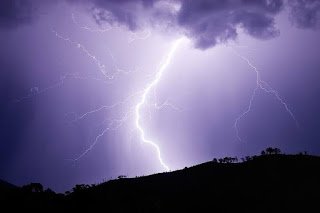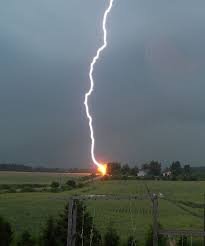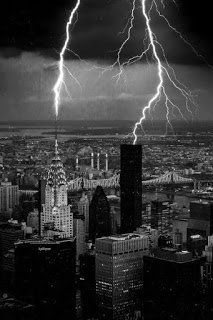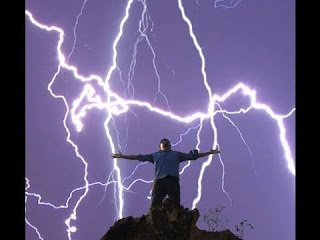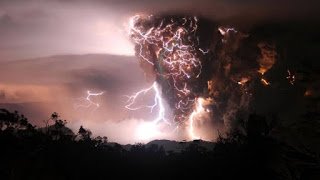10 Wonderful Facts About Lightning And Thunder
Few natural phenomena are so strikingly brilliant and awe-inspiring to witness as a lightning strike. They always accompany the raining season, and has come to be dreaded for it's deadliness, and the immense destruction it is capable of effecting.
In spite of the accompanying dangers of this wonder of nature, there are many awesome facts about it. Man has been so intrigued by it that we have dedicated efforts studying it, and in doing so has unravelled a host of excitement-packed facts about the natural wonder.
Here are 10 interesting and awesome facts about lightning you may want to know.
You often see that bright flash that reaches down from the skies when it rains. Might have guessed it travels at an extraordinary pace. You are right if you have. The insane speeds of lightning strikes are one of the most wonderful facts about it. Don't be surprised to hear the blinding fear-inducing flashes can average speeds up to 270,000 mph.
Do you understand what this actually means. It means a flash of lightning can you take 55 minutes to travel to the moon or more understandably 1.5 seconds to reach Bristol from the city of London.
When the heavens are a-rumble and those bright flashes are making brilliant work of the skies, you would be easily fooled to think them very thick bolts of light. The surprising fact is a that a lightning strike has a very tiny width, about the size of a human thumb. That's something like 2-3 cm across.
So you can actually easily enclose them in your palm, if not that they are hot intense threads of fiery electricity.
Maybe you grew up thinking that the sun or its surface is the hottest thing in the universe, and that nothing can emit even a tenth part of the heat it shoves to the earth daily, afterall, despite its distance from us we are almost often burned by its heat. Anyway you would be be disappointed to learn that something generates more heat than the sun's surface. Yes, lightning does. A single lightning strike can produce up to 30,000 °C of heat, many times more than the sun's surface. That's why many victims of lightning strikes sustain serious burns. A woman once had her anus burned severely when a bolt of lightning travelled through her mouth and exited her anus.
Almost everyone once held one to this myth, and many still do. Contrary to popular belief, spots can be hit by lightning bolts twice and even more. It happens more to tall isolated objects, just like the Empire State Building which happen to be hit by lightning strikes an average of 23 times a year. So you see you were wrong after all.
Shouldn't be a surprise since men, as the stronger sex, should always take the lead in most things if not in everything. Lightning strikes understand just a that, and so women are more likely to survive a storm than men, who are 4 times more likely to be caught in a lightning strike accident than women. Perhaps just one reason to be happy to be of the female gender, if you are one.
The two often go together, thunder and lightning. While lightning is a massive surge of electricity between clouds, or clouds and the ground, thunder itself happens when the air particles around a lightning strike expand, and thus compress to give out that irritatingly loud sound that often keep you uncomfortably afraid during a storm.
Many a victims of lightning strikes never live to breath the woeful tale. Some give up on the spot. That's why a man surviving lightning accidents a whooping 7 times is something of a miracle, and an incredible manifestation of lucky fate. Yes, a man actually lived not only to tell the tale, but also boastfully, ( you would do the same if it were you, wouldn't you). He was struck while operating a truck inside a ranger station, on two occasions after driving away from the storm. So for seven times death eluded a man. Wish you were that lucky, don't you?
Recent Research from Met office shows that helicopters can trigger flashes of lightning. This is explained in the fact that helicopters acquire a negative charge as they roam the skies, and if they come near something that has a positive charge like a hail or the base of a cumulonimbus cloud, it might trigger a strike
.
Yes, Volcanoes do. During a volcano ( most never experience one in their lifetime), ash and earth are thrown in a plume, a really giant one. On colliding, they both create an electrical charge. The flashes are then caused by the imbalance between the plume's charge and that of the atmosphere.
Plants acquire the atmosphere-abundant nitrogen in a process called nitrogen fixation.
Most of the process is carried out by bacteria and algae, but sometimes, lightning can step in to lend a hand. The intense strikes can cause oxygen to bond with nigrogen, creating nitrogen oxides which fall with the rain to give plants nitrate-rich water.
In spite of the accompanying dangers of this wonder of nature, there are many awesome facts about it. Man has been so intrigued by it that we have dedicated efforts studying it, and in doing so has unravelled a host of excitement-packed facts about the natural wonder.
Here are 10 interesting and awesome facts about lightning you may want to know.
10. Lightning Strikes Travel At Insane Speeds
You often see that bright flash that reaches down from the skies when it rains. Might have guessed it travels at an extraordinary pace. You are right if you have. The insane speeds of lightning strikes are one of the most wonderful facts about it. Don't be surprised to hear the blinding fear-inducing flashes can average speeds up to 270,000 mph.
Do you understand what this actually means. It means a flash of lightning can you take 55 minutes to travel to the moon or more understandably 1.5 seconds to reach Bristol from the city of London.
9. Lightning Flashes Actually Have Very Small Widths
When the heavens are a-rumble and those bright flashes are making brilliant work of the skies, you would be easily fooled to think them very thick bolts of light. The surprising fact is a that a lightning strike has a very tiny width, about the size of a human thumb. That's something like 2-3 cm across.
So you can actually easily enclose them in your palm, if not that they are hot intense threads of fiery electricity.
8. Though They Are That Tiny In Width They are Insanely Hot
Maybe you grew up thinking that the sun or its surface is the hottest thing in the universe, and that nothing can emit even a tenth part of the heat it shoves to the earth daily, afterall, despite its distance from us we are almost often burned by its heat. Anyway you would be be disappointed to learn that something generates more heat than the sun's surface. Yes, lightning does. A single lightning strike can produce up to 30,000 °C of heat, many times more than the sun's surface. That's why many victims of lightning strikes sustain serious burns. A woman once had her anus burned severely when a bolt of lightning travelled through her mouth and exited her anus.
7. Most People Believe Lightning Can't Strike The Same Spot Twice; That's Just A Myth
Almost everyone once held one to this myth, and many still do. Contrary to popular belief, spots can be hit by lightning bolts twice and even more. It happens more to tall isolated objects, just like the Empire State Building which happen to be hit by lightning strikes an average of 23 times a year. So you see you were wrong after all.
6. Men Are More In Danger Of A Strike Than Women
Shouldn't be a surprise since men, as the stronger sex, should always take the lead in most things if not in everything. Lightning strikes understand just a that, and so women are more likely to survive a storm than men, who are 4 times more likely to be caught in a lightning strike accident than women. Perhaps just one reason to be happy to be of the female gender, if you are one.
5. Those Deep Rumbling Sounds That Accompany Each Strike Are Actually Caused By The Expansion Of Air Particles Around It.
The two often go together, thunder and lightning. While lightning is a massive surge of electricity between clouds, or clouds and the ground, thunder itself happens when the air particles around a lightning strike expand, and thus compress to give out that irritatingly loud sound that often keep you uncomfortably afraid during a storm.
4. Someone Has Actually Been Struck By Lightning Seven Times And Survived
Many a victims of lightning strikes never live to breath the woeful tale. Some give up on the spot. That's why a man surviving lightning accidents a whooping 7 times is something of a miracle, and an incredible manifestation of lucky fate. Yes, a man actually lived not only to tell the tale, but also boastfully, ( you would do the same if it were you, wouldn't you). He was struck while operating a truck inside a ranger station, on two occasions after driving away from the storm. So for seven times death eluded a man. Wish you were that lucky, don't you?
3. You Might Want To Be Wary Of Strikes If You Ever Chance To Travel In A Chopper
Recent Research from Met office shows that helicopters can trigger flashes of lightning. This is explained in the fact that helicopters acquire a negative charge as they roam the skies, and if they come near something that has a positive charge like a hail or the base of a cumulonimbus cloud, it might trigger a strike
.
2. Lightning Doesn't Always Descend From The Skies; Sometimes It Can Ascend To Them
Yes, Volcanoes do. During a volcano ( most never experience one in their lifetime), ash and earth are thrown in a plume, a really giant one. On colliding, they both create an electrical charge. The flashes are then caused by the imbalance between the plume's charge and that of the atmosphere.
1. Sometimes Plants Need Them To Grow
Plants acquire the atmosphere-abundant nitrogen in a process called nitrogen fixation.
Most of the process is carried out by bacteria and algae, but sometimes, lightning can step in to lend a hand. The intense strikes can cause oxygen to bond with nigrogen, creating nitrogen oxides which fall with the rain to give plants nitrate-rich water.
